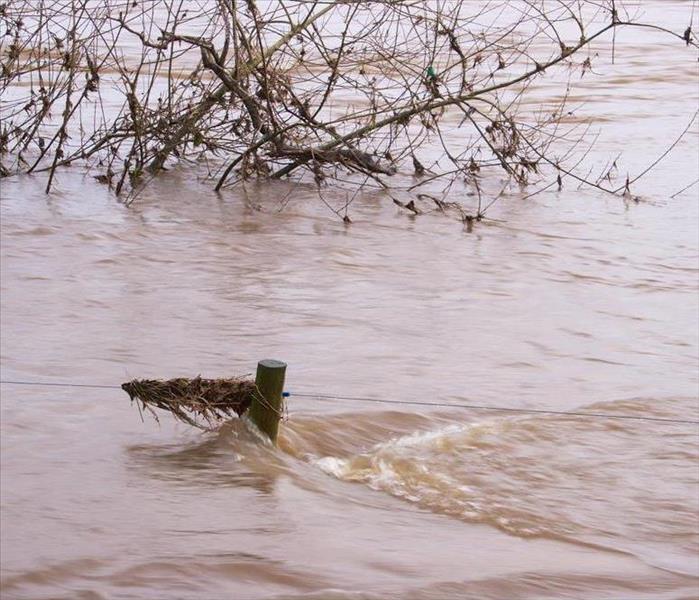5 Methods to Avoid Urban Flooding
2/17/2022 (Permalink)
 If you are having flooding issues and suspect storm or water damage, give SERVPRO a call on our 24-hour service line.
If you are having flooding issues and suspect storm or water damage, give SERVPRO a call on our 24-hour service line.
5 Ways To Prevent Flooding In Cities
Flooding is an all too common form of natural disaster faced by cities around the country, including Miami, FL. While humans are unable to stop Mother Nature, taking proactive measures toward flood prevention can help towns and communities avoid some of the major damage and cleanup. Here are five tactics that urban areas can employ to prevent catastrophic flooding.
1. Renovate Drainage Systems
Many cities have combined sewer systems, where rainwater and wastewater travel a single pipe to the sewage treatment area. This means that excessive water from torrential rains or storms can cause an overflow. Revamping this system to include a second pipe can remedy this issue. While this can be an expensive endeavor, the money saved from avoiding flood cleaning and repairs can make it worthwhile.
2. Maintain Sewer Systems
Sewer systems can easily be compromised by debris, waste and tree roots. Rust and corrosion are also common culprits in causing issues. Regular cleaning and routine maintenance can prevent problems that may ultimately contribute to flooding.
3. Preventative Structures
Seawalls, levees, dams and floodwalls are designed to hold back or retain floodwaters. These barriers can be very effective forms of flood prevention in those cities that are located near a body of water.
4. Permeable Pavement
Most cities and towns have concrete or asphalt sidewalks and streets. These materials are not absorbent, and rainwater can easily overwhelm drainage systems and cause flooding. A number of porous surfaces can be used instead to allow water to infiltrate, eliminating runoff and controlling water from storms.
5. Increase Vegetation
There are many natural defenses against flooding, and vegetation is a highly effective one. Trees can hold water in leaves and bark, and their canopies can slow the flow of water until it evaporates or is absorbed by the soil. Grass and shrubs combat erosion and reduce the force of floodwaters.
Flood prevention strategies can help towns and communities dodge some of the damage caused by water, but when disaster strikes, emergency restoration specialists are available to assist in cleanup and rebuilding.






 24/7 Emergency Service
24/7 Emergency Service